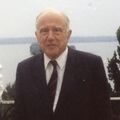Template:Selected anniversaries/April 12: Difference between revisions
No edit summary |
No edit summary |
||
| Line 59: | Line 59: | ||
||1981: The first launch of a Space Shuttle (Columbia) takes place: The STS-1 mission. | ||1981: The first launch of a Space Shuttle (Columbia) takes place: The STS-1 mission. | ||
File:Edwin_T._Layton.jpg|link=Edwin T. Layton (nonfiction)|1984: United States Navy Admiral [[Edwin T. Layton (nonfiction)|Edwin Thomas Layton]] dies. Layton served as a Naval intelligence officer before and during World War II. | |||
||1997: George Wald dies ... neurobiologist and academic ... studied pigments in the retina. Share the 1967 Nobel Prize in Physiology or Medicine with Haldan Keffer Hartline and Ragnar Granit. Pic. | ||1997: George Wald dies ... neurobiologist and academic ... studied pigments in the retina. Share the 1967 Nobel Prize in Physiology or Medicine with Haldan Keffer Hartline and Ragnar Granit. Pic. | ||
Revision as of 17:02, 12 April 2020
1817: Astronomer Charles Messier dies. He published an astronomical catalogue consisting of nebulae and star clusters that came to be known as the 110 "Messier objects".
1852: Mathematician and academic Ferdinand von Lindemann born. He will prove (1882) that π (pi) is a transcendental number.
1947: After accidentally corrupting a Gnomon algorithm configuration file, The United States Army Signal Corps uses the Project Diana antenna to extract high-grade Clandestiphrine from the corruption stream. APTO field engineers will quickly disambiguate the corruption, but an undisclosed volume of Clandestiphrine remains under Army control.
1960: Nuclear physicist Donald J. Hughes dies. Hughes was one of the signers of the Franck Report in June, 1945, recommending that the United States not use the atomic bomb as a weapon to prompt the surrender of Japan in World War II.
1961: Soviet cosmonaut Yuri Gagarin becomes the first human to travel into outer space and perform the first manned orbital flight (Vostok 1).
1984: United States Navy Admiral Edwin Thomas Layton dies. Layton served as a Naval intelligence officer before and during World War II.
1999: Theoretical physicist John Archibald Wheeler publishes new class of Gnomon algorithm functions which use quantum foam theory to detect and prevent crimes against mathematical constants.
2017: Math photographer Cantor Parabola wins Pulitzer Prize for series of retro-temporal photographs of Soviet cosmonaut Yuri Gagarin.







